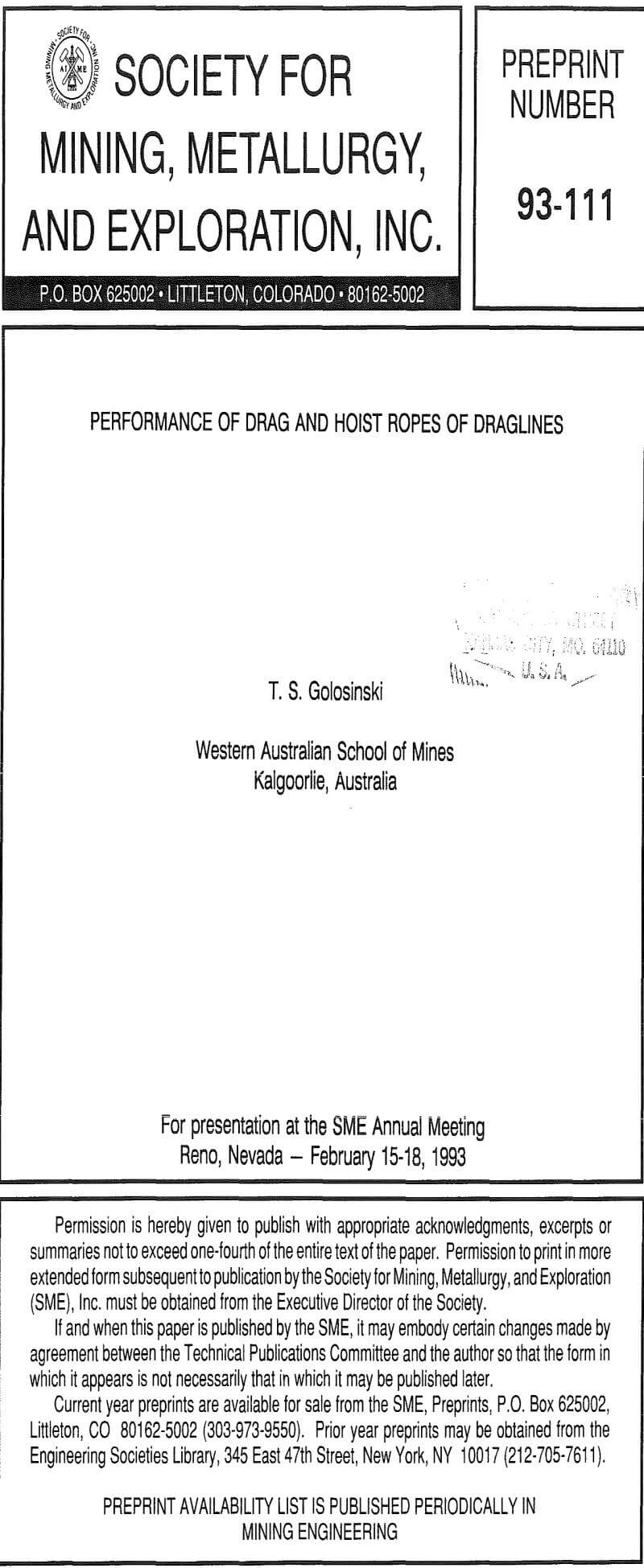Typical dragline rigging includes several sets of ropes: hoist ropes, drag ropes, dump ropes and boom suspension ropes. The drag and hoist ropes contribute most to the dragline operating cost, and significantly influence dragline productive time. Both work in very difficult conditions and wear out rapidly. As a result frequent rope changes are required at a substantial cost and time loss to the operation. Although performance of rigging has a profound impact on dragline performance, there are no industry-wide standards related to its selection, operation and maintenance.
The hoist and drag ropes installed on surveyed draglines were supplied by ten different manufacturers, and differed widely in type and construction. All basic rope types were used , with following strand constructions: standard, Seale, Warrington, Warrington-Seale, and Filler-Seale.
Working conditions of hoist and drag ropes are quite different. The first have to cope primarily with bending (rope drums, point sheaves, deflection sheaves), and with tension forces imposed by the bucket and its load. The drag ropes are exposed to severe abrasion at the pit crest, and severe bending and crushing at fairleads, all while coping with tension forces imposed by resistance of the bucket to dragging.
Following abbreviations are used,
D – diameter of rope drum
Dp – diameter of boom point sheaves
d – rope diameter
x – mean value of the measured parameter
s – standard deviation of x
B/d – average bending ratio of ropes:
B/d = (D + Dp)/2d
n – operational safety factor of the rope
n = (rope strength) x (number of ropes)/(bucket load + bucket weight)

Of particular interest is the difference in performance of 8-strand and 6-strand rope constructions, which clearly indicates the superiority of the first. On average 8-strand ropes last almost 50% longer in dragline hoist applications.
Dragline rope maintenance practices differ greatly from application to application. Unfortunately the survey has not provided sufficient data to quantify the impact which various rope maintenance activities have on rope performance. Therefore only general comments on the topic are made.
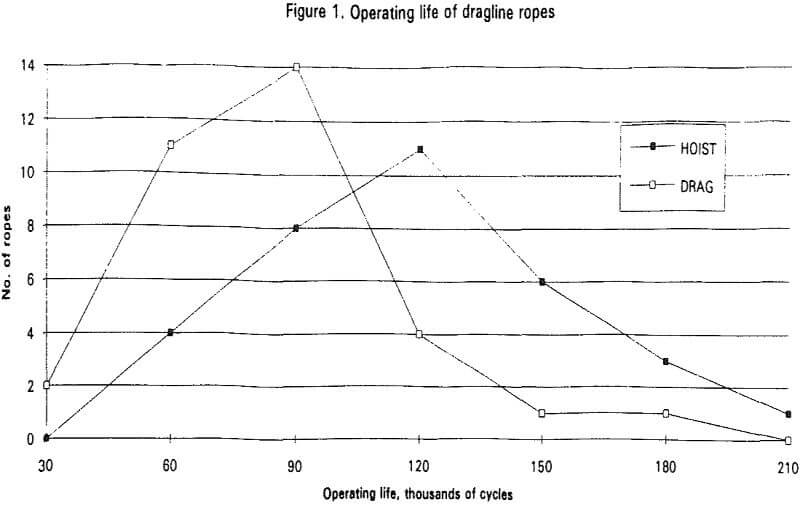
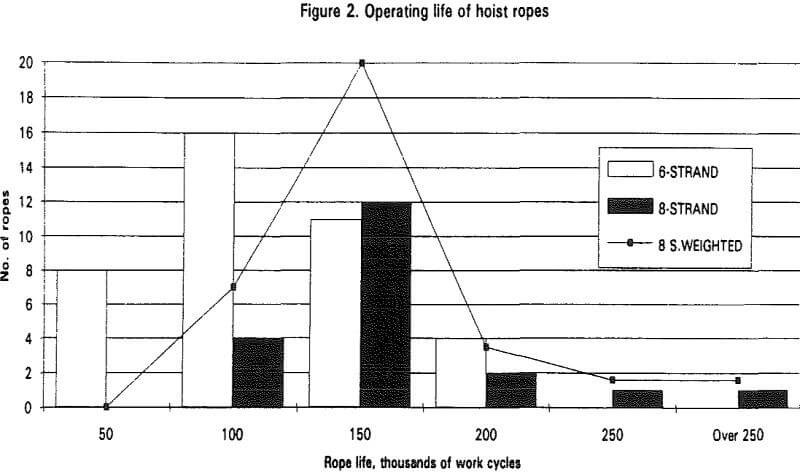
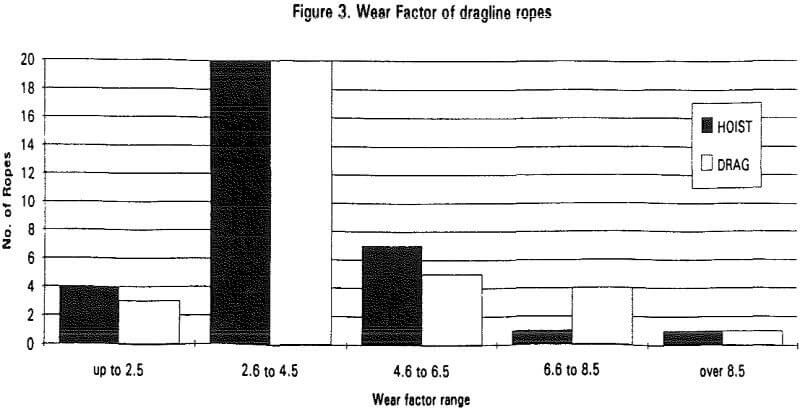
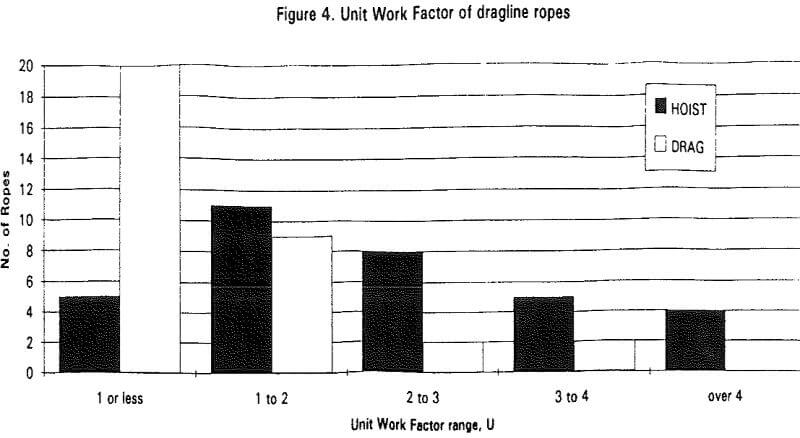
Abrasion of outside wires reduces metallic cross-section of the rope, thus lowers rope strength. This wear pattern is common to drag ropes for which it often is the main discard criterion. While common practice frequently allows for wear of 1/3 of the outside wire diameter, the exact permissible wear limit needs to be defined based on allowable loss of rope strength. Supplementary discard criteria may have to be used for drag ropes.
